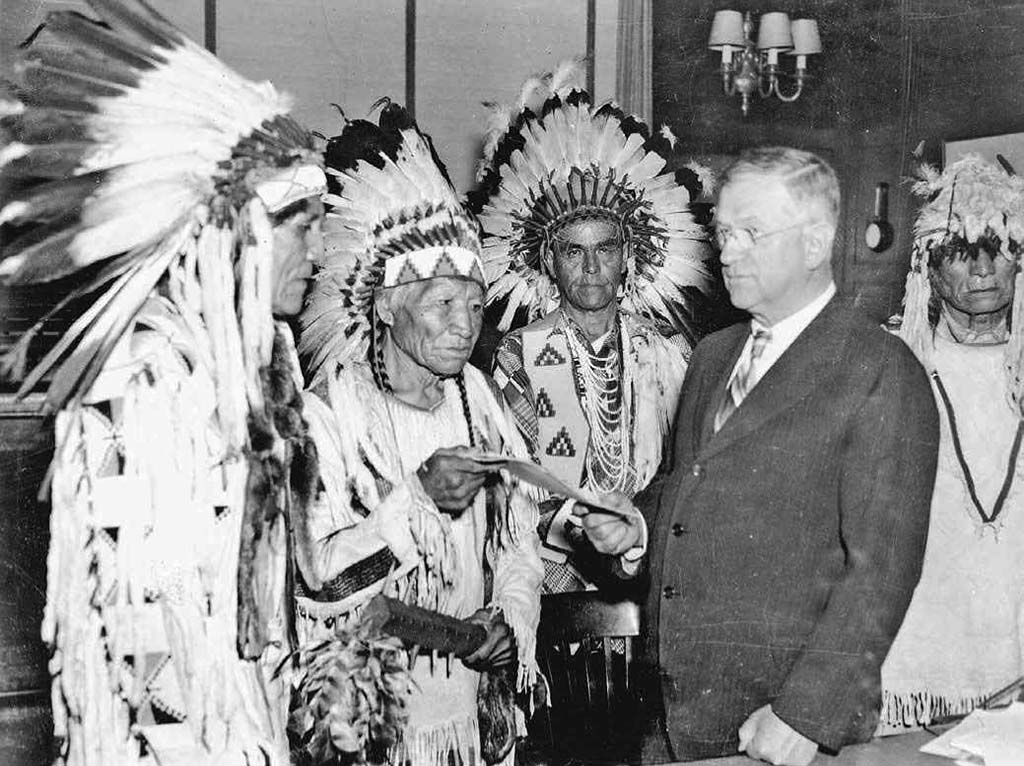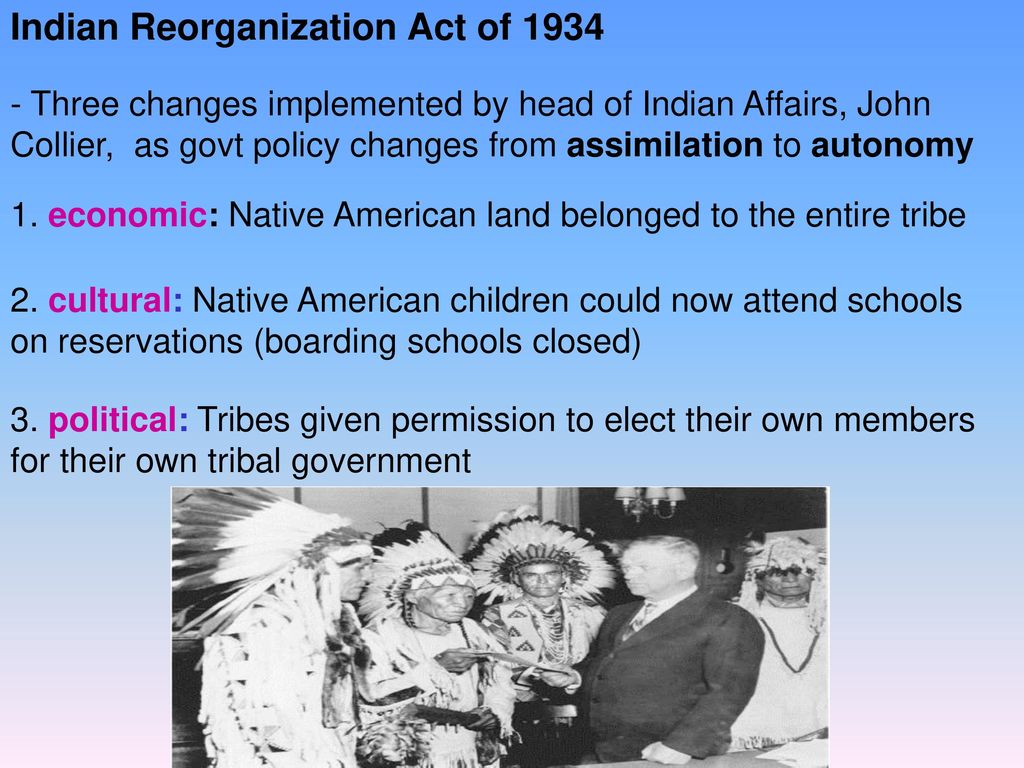
The Unfinished Revolution: How the Indian Reorganization Act Reshaped Native America
In the annals of American history, few legislative acts concerning Native Americans have generated as much enduring debate and profound transformation as the Indian Reorganization Act (IRA) of 1934. Dubbed the "Indian New Deal," this landmark legislation sought to reverse over half a century of federal policies aimed at dissolving tribal structures and assimilating Indigenous peoples into mainstream American society. Its impact, however, was not a simple tale of liberation; it was a complex tapestry woven with threads of empowerment, continued federal oversight, internal divisions, and a legacy that continues to shape tribal sovereignty today.
To understand the IRA, one must first grasp the devastating context it sought to remedy. The preceding era, dominated by the Dawes Allotment Act of 1887, had systematically dismantled communal landholdings, carving tribal lands into individual parcels. The "surplus" lands were then sold off to non-Native settlers, a policy that, as Commissioner of Indian Affairs John Collier observed, "led to the spiritual death of the Indian." The statistics are stark: in 1887, Native Americans held 138 million acres; by 1934, this had plummeted to a mere 48 million acres, much of it arid and unproductive. Poverty, disease, and cultural erosion were rampant, exacerbated by the coercive boarding school system designed to "kill the Indian, save the man."
It was into this bleak landscape that John Collier, a social reformer and advocate for Native American rights, arrived as Commissioner of Indian Affairs in 1933. Deeply influenced by his admiration for Pueblo cultures and appalled by the conditions on reservations, Collier envisioned a radical departure from past policies. He believed that tribal cultures and traditional communal life held valuable lessons for modern society and that federal policy should support, not destroy, Native self-governance. The IRA, his brainchild, aimed to be the legislative vehicle for this vision.
The core provisions of the Indian Reorganization Act were revolutionary for their time. First and foremost, it effectively ended the allotment policy, halting the further loss of tribal lands and providing mechanisms for tribes to acquire new lands. Secondly, it encouraged and financially supported the formation of tribal governments with written constitutions, effectively restoring a degree of self-governance that had been systematically undermined. These constitutions often included provisions for elected councils, tribal courts, and the power to negotiate with federal, state, and local governments. Thirdly, the Act established a revolving credit fund to provide loans for tribal economic development, education, and land purchase, recognizing the dire economic conditions on reservations. Finally, it mandated a preference for Native Americans in Bureau of Indian Affairs (BIA) employment and emphasized the importance of cultural and religious freedom, marking a significant shift away from forced assimilation.
The implementation of the IRA was not a unilateral imposition. Crucially, the Act required a referendum for each tribe to vote on its adoption. This democratic component, while celebrated by some, also exposed deep divisions within Native communities. Of the 269 tribes eligible to vote, 181 accepted the Act, while 77 rejected it. This initial reception highlighted the complex relationship between tribes and the federal government, as well as the diverse needs and historical experiences of different Indigenous nations.
.jpg)
One of the most notable rejections came from the Navajo Nation, the largest tribe in the United States. Their decision stemmed from a combination of factors, including distrust of the BIA stemming from Collier’s unpopular livestock reduction program (implemented to combat overgrazing), a fear of federal control, and a strong existing traditional government that many felt would be undermined by a Western-style constitution. Other tribes also rejected the IRA, some fearing that adopting a federal constitution would imply acknowledging the U.S. government’s ultimate authority over their inherent sovereignty, while others felt it simply did not go far enough to address their unique challenges.
For those tribes that accepted the IRA, its impact was immediate and varied. The most tangible benefit was the halt to land loss. For the first time in generations, the land base of many tribes began to stabilize, and in some cases, even grow. The Act also provided a framework for economic development, leading to the establishment of tribal enterprises, agricultural projects, and improved infrastructure. On the Pine Ridge Reservation, for example, the Oglala Lakota adopted an IRA constitution and began to rebuild their governmental structures, which had been decimated by allotment.
However, the IRA was far from a panacea, and its "unintended consequences" are a critical part of its legacy. While it championed self-governance, it often did so by imposing a Western model of government—written constitutions, elected councils, and majoritarian voting—that sometimes clashed with traditional, consensus-based leadership structures and clan systems. This often created internal strife, as traditionalists found themselves at odds with those who embraced the new, federally approved systems. As historian Graham D. Taylor noted, "Collier’s vision of self-determination was still framed within a federal paternalistic oversight." The BIA, despite its stated goal of empowering tribes, often retained significant control, reviewing tribal constitutions and budgets, thereby limiting true autonomy.
Furthermore, the funding promised for economic development often proved insufficient, and the BIA’s bureaucratic processes could be slow and cumbersome. Many tribes found that while they had the "right" to self-governance, they lacked the resources and complete authority to fully exercise it. The Act also did little to address the deeply entrenched poverty and lack of infrastructure on many reservations, issues that required far more than constitutional reform.
Despite these criticisms and limitations, the Indian Reorganization Act remains a watershed moment in federal Indian policy. It undeniably shifted the paradigm from assimilation to a recognition, albeit imperfect, of tribal distinctiveness and the right to self-governance. It laid the legal and political groundwork for modern tribal governments, providing a foundational structure upon which subsequent movements for self-determination would build.
The IRA’s legacy is perhaps best understood as a crucial pivot point. It didn’t solve all the problems created by centuries of colonial policies, nor did it grant full, unfettered sovereignty. However, it reversed the tide of land dispossession, affirmed the existence of tribal political entities, and fostered a renewed sense of cultural pride and identity among many Native nations. The constitutions adopted under the IRA, even with their flaws, became the bedrock for tribes to assert their rights, manage their affairs, and engage with the federal government as distinct political entities.
In the decades that followed, the principles embedded in the IRA, particularly the concept of self-determination, would evolve and gain strength. The Indian Civil Rights Act of 1968, the Indian Self-Determination and Education Assistance Act of 1975, and the Indian Gaming Regulatory Act of 1988 all owe a debt to the IRA’s initial recognition of tribal governmental authority. These later acts expanded tribal control over federal programs, strengthened tribal courts, and provided avenues for economic development that allowed tribes to assert greater sovereignty than Collier could have imagined.
Today, the Indian Reorganization Act of 1934 stands as a testament to the complex and often contradictory history of federal-Indian relations. It was an imperfect, paternalistic reform that nonetheless sparked an unfinished revolution. By ending the destructive allotment policy and providing a framework for self-governance, it enabled Native nations to begin the arduous journey of rebuilding, reclaiming, and redefining their sovereignty, a journey that continues to this day. Its impact is a powerful reminder that history is rarely simple, and even well-intentioned reforms can carry a mixed and enduring legacy.



